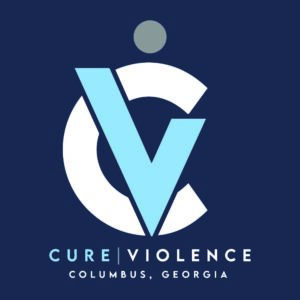Cure Violence is a community-based, data-driven violence prevention program that works in partnership with the Columbus Health Department. Violence in our communities has become a public health epidemic. As with any infectious disease, violence clusters, spreads and can be transmitted. The program Cure Violence demonstrates that violence can be reduced by detecting and interrupting conflict, identifying and treating the highest risk individuals, and interrupting and changing social norms. This scientific approach provides evidence that adverse circumstances and exposure lead to higher risk for violent activity, but can be mediated through effective and comprehensive prevention approaches, such as Cure Violence.
The Cure Violence Team – Outreach Workers
Not pictured:
Jessica Allen
DeMarcus Jones
Akheem Peggins
The Problem
According to the Centers for Disease Control and Prevention, gun violence is the leading cause of death for young black males, ages 15 to 24. It is an epidemic that disproportionately affects low-income communities and communities of color at an alarming rate. Columbus’ neighborhoods like Cusseta Rd/Elizabeth Canty, Benning Hills, and Carver Heights continue to experience a disproportionate burden of violence and its direct effects on investments, civic participation, and community development.
Columbus’ homicide numbers have tripled since 2009 (13) and reached a record of 46 with the end of 2020. Recent years has seen a disturbing number of young offenders with many being under the age of 20.
Furthermore, many of the residents of these neighborhoods suffer the direct effects of repeated trauma and the indirect effects of unhealed past traumas. Social determinants of health are impacted by violence which increases the risk of other medical illnesses, disrupts children’s learning, and impacts community cohesion.
• Education – Low attendance, low graduation rates and poor performance
• Community Cohesion – Reduced community cohesion and collective efficacy
• Economic Conditions – Reduced business and commercial activity/investments
• Health Care – Higher costs due to violent injuries and increase in chronic conditions
• Developed Environments – Unsafe and low usage of public spaces/abandon buildings
• Community Resources – High demand for public safety resources and trauma incidents
• Violence – Is a social determinant of health that impacts itself.
Many of the communities have been stuck in this cycle of generational trauma for decades and the solution will have to intervene at the street level to be effective.
If you or your organization is interested in working with Cure Violence, please contact Reggie Lewis, at 706-905-0956, or email at Reggie4.Lewis@gmail.com.







